Super Tantalus Run: Nintendo, and the allure of the just-out-of-reach
Nintendo has always gotten off on withholding. Legend of Zelda and Metroid games taunt us by making inaccessible areas visible; behind doors locked by keys we don’t have, placed beyond a chasm we cannot cross, protected by shields we cannot breach. Thus, the satisfaction of playing these games lies in our overcoming these roadblocks, in venturing elsewhere and returning with the requisite items and skills that will finally allow us to pass.
Opening a treasure chest becomes the most suspenseful moment of Zelda…
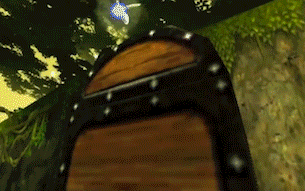
Ultimately, the appeal of the game lies in the realm of the potential; the experience is not about what we do as we play, it is about what we plan to do once we reach the next power-up.
The side-scrolling Super Mario games, in contrast, are more immediate.
Because Mario is played in the present, the situation confined to whatever is visible on-screen at that moment, the thrill of the game isn’t about returning to something previously insurmountable with newfound abilities (as everything in the game world exists from the start, only for us to pass over and leave behind). Our hero, unlike Link or Samus, possesses all the abilities he needs to reach his goal — simply provided the player has the skill to chart a suitable course through the dangers of the level.
Obviously, the notion of progress looks very different under these different systems: We progress toward the end of our adventure in Zelda and Metroid by going backward until that supplies us with a new path forward. In Mario, going forward is always the way toward the end; progress conforms exactly to steps taken and miles traveled.
Nintendo’s newest Mario game, Super Mario Run, takes this philosophy one bold step farther….
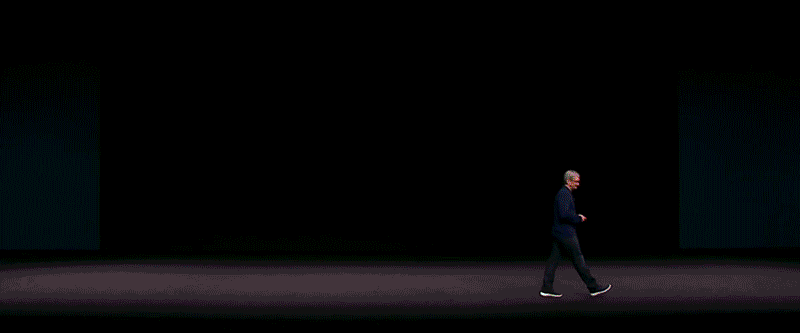
Made for the iPhone, Super Mario Run does away completely with the concept of forward motion as a player-controlled option. Instead, Mario runs constantly, stopping only when he smashes face first into a wall. A further simplification: it is no longer strictly necessary to jump over (or onto) Goombas, Koopas, and other enemies; instead Mario will automatically “vault” over them, leaving both himself and the enemy unharmed (this also applies to small-enough pits and steps upward in the terrain).
In the simplest terms, the game nearly plays itself.
The first stage can be completed with a mere four inputs from the player:
In all fairness though, one needs a level this easy to become acclimated to the strangeness of Mario’s headlong sprint.
When I first picked up the game, I remember feeling disoriented and out of control. A voice inside me said, “Just keep jumping; the Goombas can’t get you if you’re always in the air,” but, predictably, this approach quickly failed when I landed directly in front of one; too close to jump again in time before Mario barreled into it.
What a surprise, what a thrill, then, when this didn’t result in death — instead Mario flipped cleanly over his foe and continued on…
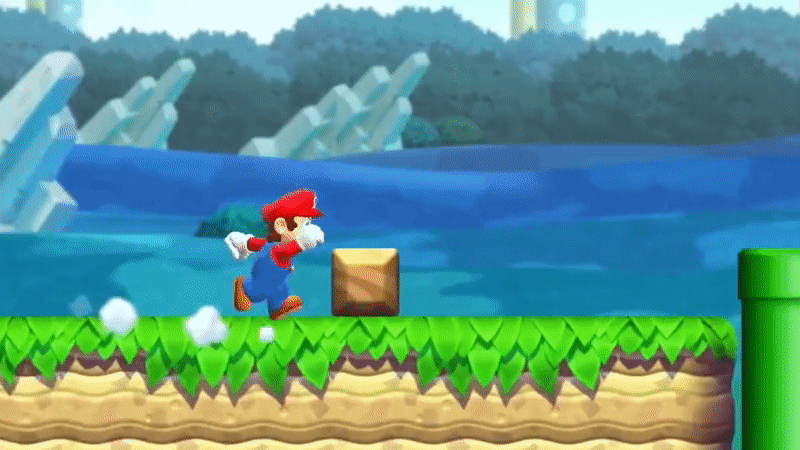
Soon, the panic began to subside. The initial fear of unstoppability gave way to the joy of speed. Instead of just focusing on maintaining a sense of control over Mario by using my one command as much as possible, I began to trust that he could fend for himself if I wanted to absorb the details of the course. In fact, it turns out all my caution in previous games was a liability; Mario is at his most powerful when he is running at a full sprint.
It wasn’t long before I felt less like the player and more like a partner — Mario could do much by himself, but my help could take things to the next level. Sure, he could vaunt an enemy, yet a tap from me at that point would turn that vault into a 360 corkscrew jump. Every new level, then, was a crash course in new ideas and new mechanics that I was expected to grasp at a moment’s notice because my tireless partner was willing and able.
Before, our job as players was to move Mario forward and avoid obstacles; now Mario can take care of that himself:
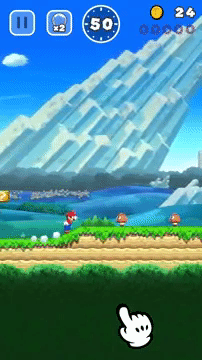
However, with this more symbiotic, mobile-friendly style of gameplay, Nintendo faced an interesting ‘satisfaction’ problem with Super Mario Run that this franchise had previously never encountered: what would actually attract people to play (and, more importantly, keep playing)?
The game’s designers found an answer in the formula that makes Zelda# and Metroid# so appealing: they peppered each level with special coins — placed in locations that are difficult to reach, and often requiring advance knowledge to choose the correct path…
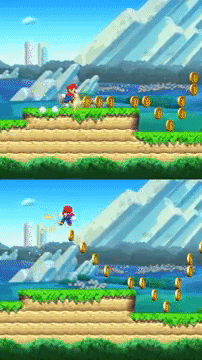
These coins come in sets of pink, purple, and eventually black; all of which contrast strongly with the rest of the environment and draw our attention, though not until we’ve already missed our opportunity to collect them, leaving us to lament our inattention and plan a new attempt. The full set of five must be collected in a single run too, or they’re essentially worthless.
All of this amounts to a Mario game that is constantly encouraging us to look backward, to return to terrain we’ve already traversed:
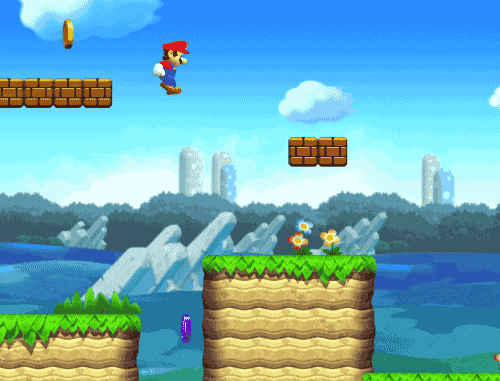
It is hard to overstate the allure of these unique coins. The expert level designers at Nintendo have placed them in spots that initially seem impossible to reach, yet with a little reflection seem so attainable one cannot believe they missed them. Moreover, the maneuvers needed to claim these coins demand perfection from us as players; we must find ways to hang in the air longer than normal, to double back and reverse Mario’s inexorable forward progress, to kill the dead (Boos and Dry Bones, naturally).
As one leaps for a coin, spins at the apex of the jump’s arc, and falls just short, their precious desire just inches out of reach, one can’t help but marvel at the feeling that Nintendo has captured and delivers to its audience — one of frustration, but a frustration tempered by determination.
So ardent is my desire for these coins that no number of failures and setbacks will discourage me…
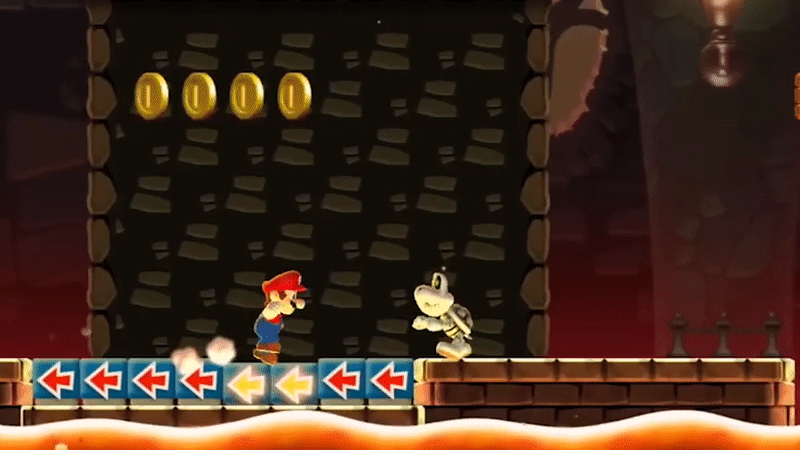
Yet as soon as the level ends and the game tallies one’s well-earned success, our achievement recedes from grasp. The pink coins can be forgotten; a new set of coins — purple — has taken their place, in even more daunting locations that defy our best efforts to reach them. This will be repeated again when the purples are collected and black coins take their place. Collecting every pink coin in the game only unlocks a special level that features the most diabolically placed pink coins in the game. The same holds true for the purple and black coins.
Sadly, the grand pattern into which Super Mario Run falls is one where satisfaction is unsatisfactorily fleeting, obtained only long enough for us to feel disappointment when it outpaces us again.
The game makes each of its players into a Tantalus, trapped in a Tartarus of technology.
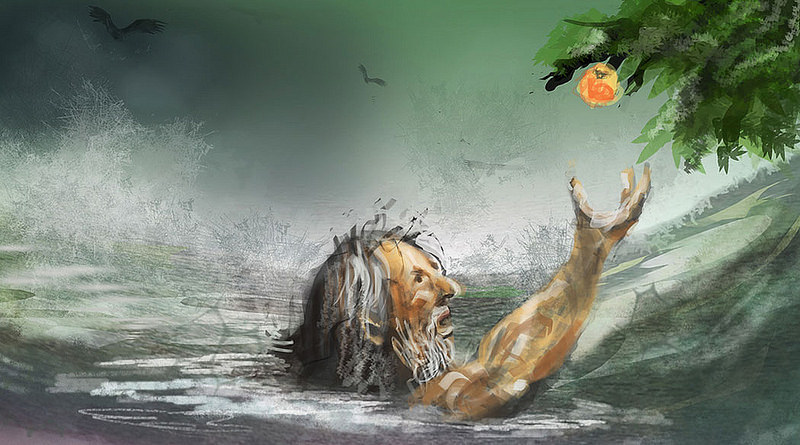
Just as Tantalus is doomed never to reach the fruit growing above him, and never to drink the water he is immersed in, so too are we Super Mario Run players doomed to never quite attain every tantalizing trinket that eludes our reach.
The beguilingly seductive design strategy even extends into the competitive “Rally” mode — in which players compete to be a better Tantalus than their opponent, racing against the replay of someone else and attempting to gather more coins…
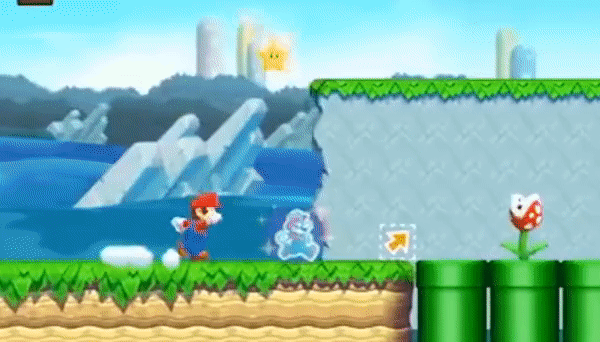
This mode will satiate one’s gnawing hunger for coins, yet it too ends up being simply one endeavor embedded in a larger gameplay structure that preserves the game’s strategy of constantly introducing new goals just out of reach.
The reward for winning rallies are the Toads in attendance at the race, who will return to your kingdom and populate it, enabling various construction projects. Only by winning enough green and purple Toads, for instance, can one build Luigi’s house and thereby unlock him as a playable character. With every small increment of population growth, new items come into stock at the shop and become available for purchase: Mini-game parlors, warp pipes, item blocks, even a facsimile of one of Bowser’s fortresses can be erected.
It is only too easy to begin thinking of Rally Mode in terms of these rewards, working toward one in particular. However, by the time one’s doggedly pursued reward has finally been acquired, a host of more alluring ones just waiting to be unlocked will have been added to the shop; a particularly flagrant tantalization.
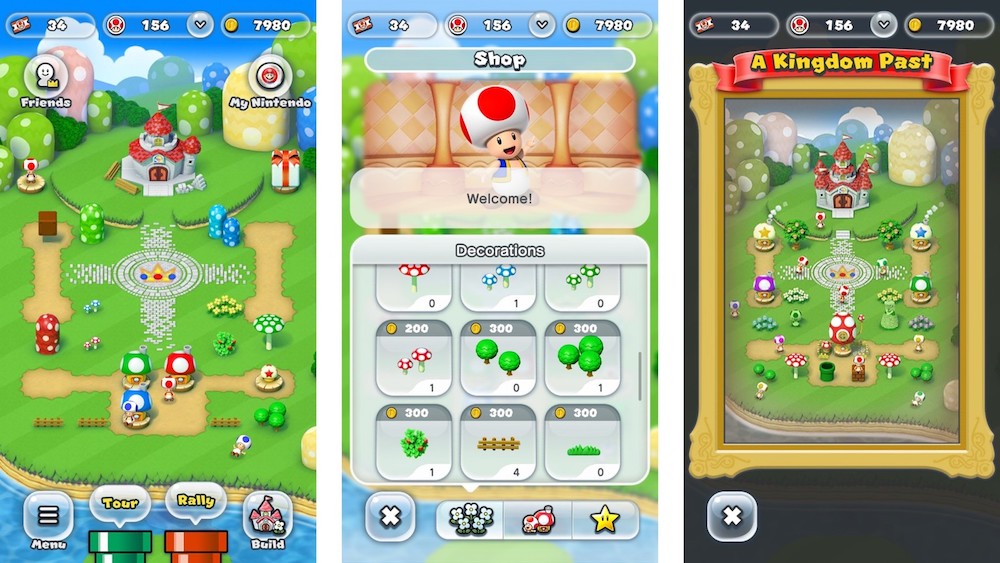
Most recently, I hit the milestone required to build Toadette’s house, the last of the playable characters I needed to unlock. I had no idea what assumably-amazing abilities would set her apart from the other characters, but was excited to find out what would materialize from all my time and effort. Except it soon became clear Nintendo never had an idea how to distinguish her either, as she plays identically to Mario.
All the effort I felt I had invested (a direct result of the teasing manipulation this game embodies) went furiously unrewarded…
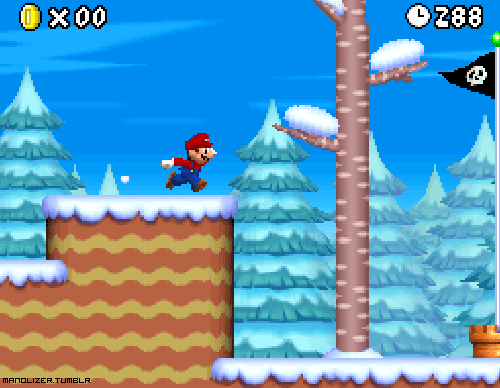
Though insofar as all video game achievements are virtual and essentially unreal in a wider sense, let this critique extend to the gratifying joys found in Zelda and Metroid as well.
Defeating Space Pirates and navigating the Water Temple may not contribute anything concrete to a player’s life, though they do foster a sense of accomplishment missing from Super Mario Run. Acquiring the ability to use bombs in Zelda (or Metroid) triggers all manner of thoughts for me; I begin combing my mental catalogue of dead-ends and blocked paths wondering which I can now open, I have a concrete sense of action I can take in that fictional world. This process is repeated each time I power up, but at the same time is different because each item and ability I gain is unique, allowing me to solve unique problems.
Each one will change the course of my adventure in a way no other will, thus I feel inspired to adventure anew and find what surprises lie in wait.
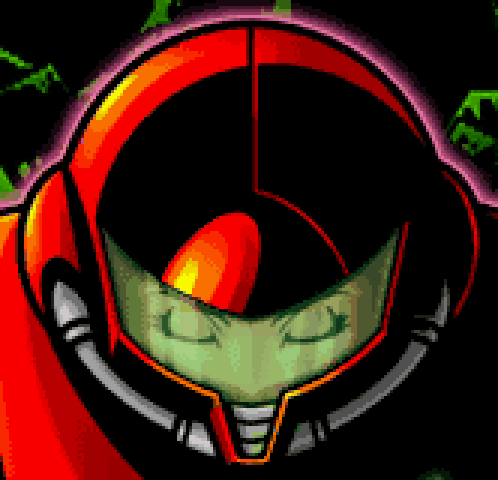
Contrast this with a round of Toad Rally…
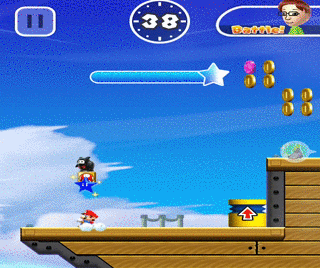
There, no matter what, the reward is coins. The quantity varies with one’s performance, yet the result is always just another drop in the bucket toward purchasing another meaningless accessory for the game’s home screen. And the limits of this mode quickly become apparent: there is only one type of course worth playing for efficient Toad collecting, so play quickly falls into routine as we grind away at our coin debt.
Tragically, while every milestone in Zelda and Metroid sparks the imagination with the possibility of new experiences, Mario Run’s feel like depositing a paycheck.
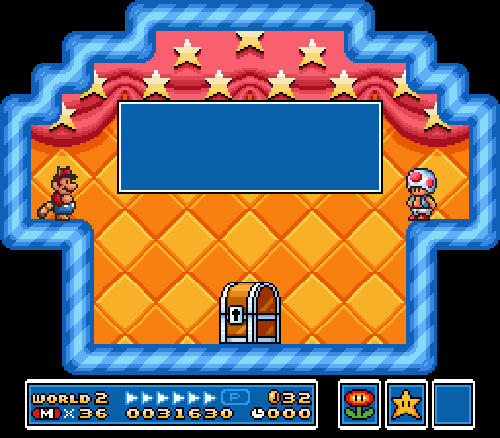
Submitted To Mario, Mobile Gaming, Nintendo
Like what you read? Share it.
(That helps us.)
Love what you read? Patronize Danny Sullivan.
That helps us and the writer.
What is Patronizing? Learn more here.


